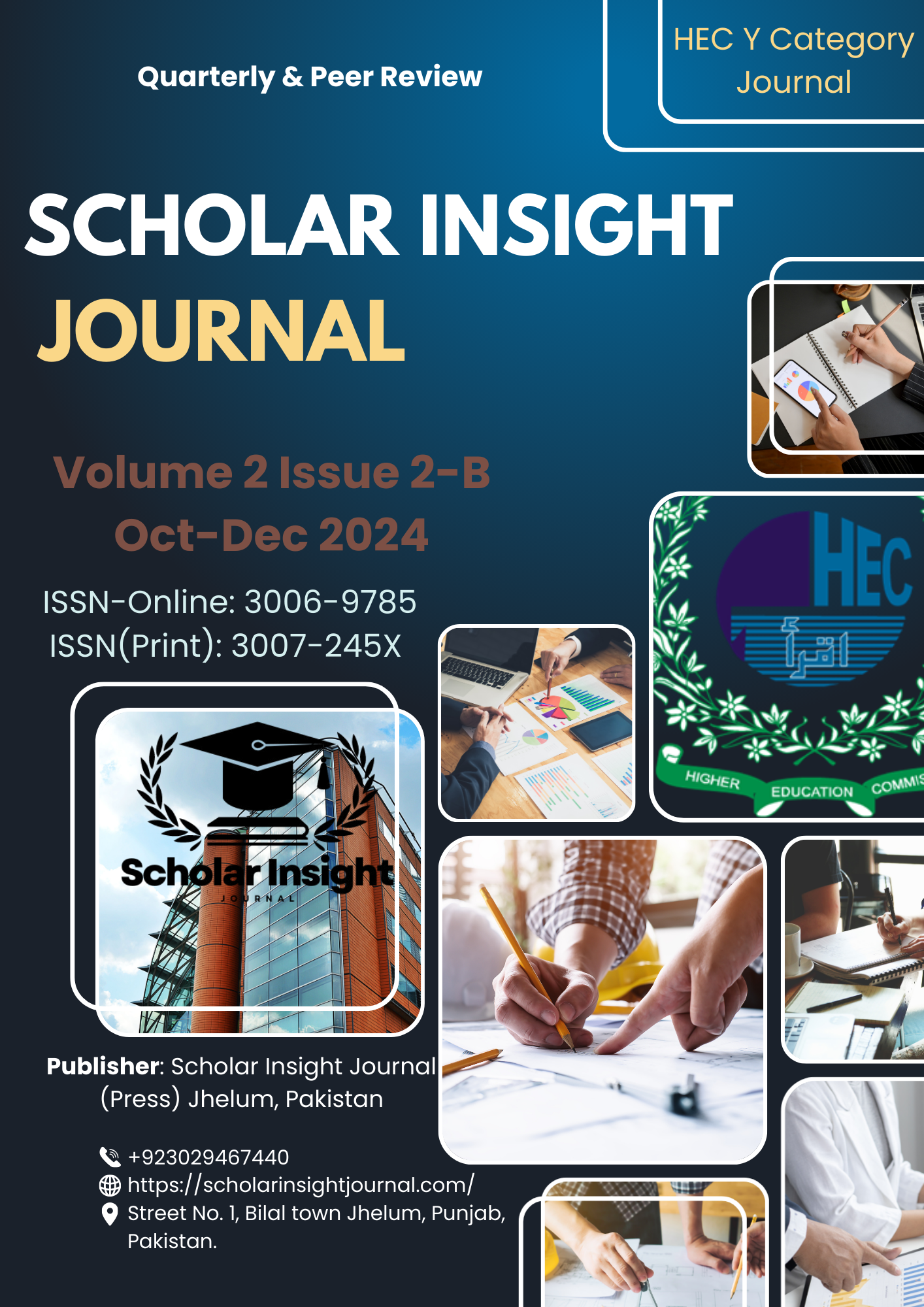A Descriptive Analysis of Morpho-Semantic Features of Pothwari
الكلمات المفتاحية:
Pothwari، genitive case markers، morpho-semantic features، oral literature، comparative linguisticsالملخص
This study explores the diversity of morpho-semantic features of genitive case markers in Pothwari, a regional language spoken in the north-central areas of Pakistan. The research highlights how possession is encoded in Pothwari and compares its structural patterns with those found in English, Urdu, and Punjabi. The primary data consists of oral literature, including anecdotes, folk tales, and poetic expressions that have been preserved through generations by local storytellers and folk singers. Since Pothwari has a predominantly oral tradition with limited written documentation, these sources provide valuable linguistic evidence for examining natural language use. The analysis focuses on the morpho-segmental behavior of possessive constructions, examining their form, function, and semantic relationships. Drawing on the theoretical foundations of Chomskyan linguistics, particularly structural and generative principles, the study identifies how genitive markers in Pothwari interact with noun phrases, reflect cultural patterns of ownership, and differ from genitive constructions in neighboring languages. The findings reveal that Pothwari genitive markers exhibit a rich range of morphological variations influenced by phonological environment, syntactic positioning, and semantic intent. This research contributes to the descriptive and comparative understanding of Pothwari and adds to broader discussions in South Asian linguistics by documenting a less-explored language and its unique possessive system. The study also emphasizes the importance of preserving oral linguistic traditions as essential resources for analyzing regional languages.
التنزيلات
المراجع
1. Bailey, T. (1914). A Punjabi phonetic reader. Createspace Independent Publishing.
2. Benveniste, E. (1971). Problems in general linguistics (M. E. Meek, Trans.). University of Miami Press. (Original work published 1966)
3. Chomsky, N. (1981). Lectures on government and binding. Foris Publications.
4. Chomsky, N. (1986). Knowledge of language: Its nature, origin, and use. Praeger.
5. Chomsky, N. (1992). A minimalist program for linguistic theory (MIT occasional papers in linguistics, No. 1). MIT Press.
6. Crystal, D. (1997). English as a global language. Cambridge University Press.
7. Durieux, F. (1990). The meanings of the specifying genitive in English: A cognitive analysis. UIA.
8. Gill, H., & Gleason, H. (1969). A reference grammar of Punjabi. Punjabi University, Department of Linguistics.
9. Koul, N., & Madhubala. (1992). Punjabi language and linguistics: An annotated bibliography. Indian Institute of Language Studies.
1. Kumar, A. (1997). Genitive construction in Hindi [Unpublished doctoral dissertation]. University of Delhi.
2. Malik, A., & Cheema, A. (1995). The phonology and morphology of Panjabi. Munshiram Manoharlal Publishers.
3. O’Leary, C. F. (1992). Sociolinguistic survey of Northern Pakistan (Vols. 1–5). National Institute of Pakistan Studies & Summer Institute of Linguistics. (See also Ethnologue, 2009, 16th ed.)
4. Quirk, R., Greenbaum, S., Leech, G., & Svartvik, J. (1985). A comprehensive grammar of the English language. Longman.
5. Radford, A. (1988). Transformational grammar. Cambridge University Press.
6. Shumaker, N. W. (1975). The semantics of the English ’s genitive. American Speech, 50(1/2), 70–86.
التنزيلات
منشور
إصدار
القسم
الرخصة
الحقوق الفكرية (c) 2024 Scholar Insight Journal

هذا العمل مرخص بموجب Creative Commons Attribution 4.0 International License.
Authors retain the copyright of their work. All articles in Scholar Insight Journal are published under the terms of the Creative Commons Attribution 4.0 International License (CC BY 4.0).
This license permits anyone to read, download, copy, distribute, print, search, or link to the full texts of the articles, and to use them for any other lawful purpose, without asking prior permission from the author(s) or the publisher, provided proper attribution is given to the original work.





